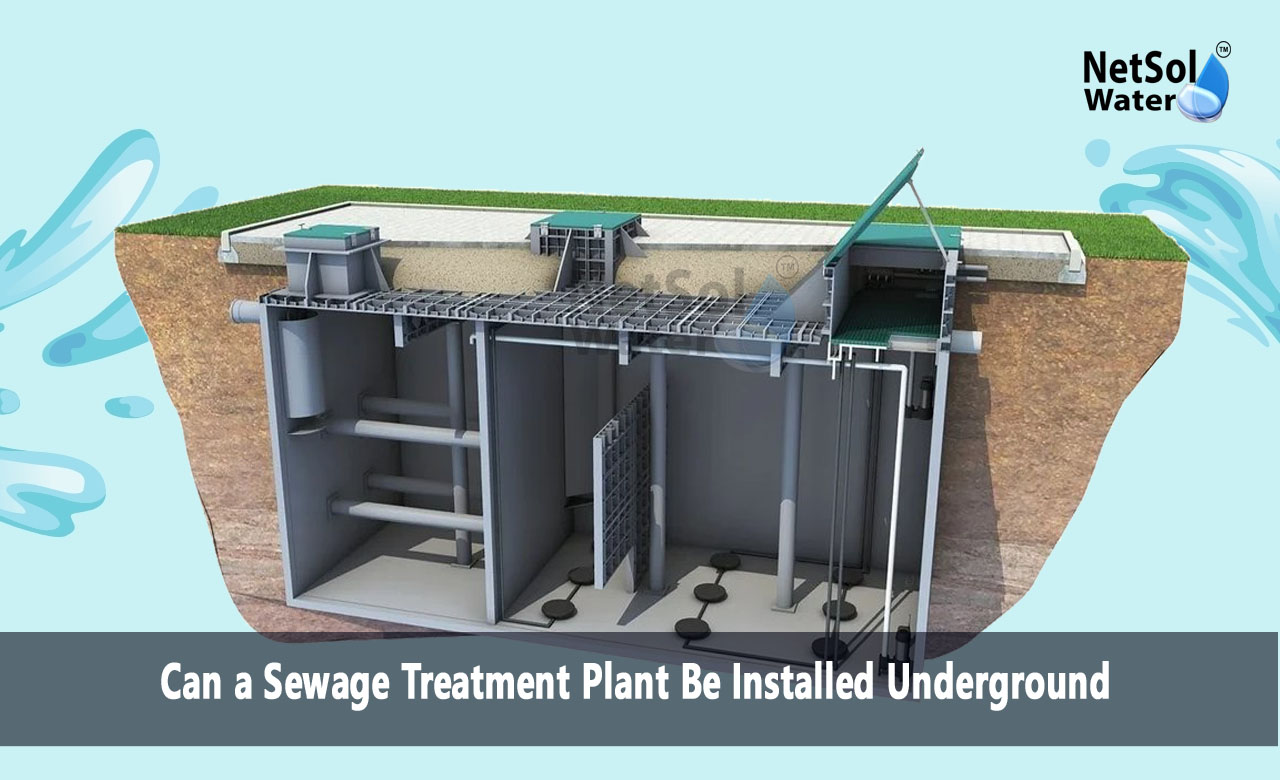Can a Sewage Treatment Plant Be Installed Underground?
Many people wonder if a sewage treatment plant installed underground is possible or practical. With more focus being put on there not being enough space, preserving the environment, and conserving urban and residential areas, underground installation is gaining popularity and reality.
Here, we will see if an underground sewage treatment plant can be fitted, its advantages and disadvantages, and what are the most important considerations before opting for it.
Yes, a sewage treatment plant installed underground are completely possible and already in use in most locations around the world. The development of engineering and technology has enabled us to design small but effective STPs that can be accommodated underneath the ground without any loss of efficiency.
Why Underground Installation?
· Space Conservation: Land is scarce and expensive in the city and developed zones. Having the sewage treatment plant underground saves valuable surface space for parking lots, parks, or buildings.
· Visual Appeal: Outdoor treatment plants are sometimes dirty and smell bad. Underground location conceals the plant and maintains the area around it appearing more attractive.
· Noise Reduction: Mechanical devices such as blowers and pumps may generate noise. Since the earth itself acts as a sound barrier and the plant in question is underground, noise pollution is largely minimized.
· Temperature Control: Underground space is at constant temperatures throughout the year, which is perfect for biological treatment systems that are required to be at a certain temperature range to run at peak efficiency.
· Safety: Underground position offers security from vandalism, accidental destruction, or harsh climatic conditions.
Challenges of Locating Sewage Treatment Plants Underground
Although possessing an STP underground has numerous benefits, challenges still have to be considered with careful attention:
· Increased Initial Expenses: Excavation, strengthened framework, and water-proofing are contributing factors to higher initial expenditure compared to conventional over-ground systems.
· Access and Maintenance: Periodic examination, upkeep, and prompt repair are hindered in underground concepts. Adequate access points such as manholes, ladders, and vents must be provided.
· Water Table Issues: Under the situation of high groundwater table areas, the underground tank or chamber is still exposed to flooding or soil settlement. Waterproofing and drainage systems must be installed specially.
· Ventilation and Odor Control: Treatment of sewage is the cause of generating gases and odors. There must be effective ventilation and odor control measures installed so that the underground plant will not be a cause of discomfort or health hazard.
· Structural Integrity: Underground structure has to be sufficiently robust to withstand pressure from the soil as well as any load on the surface like traffic or construction.
Key Considerations for an Underground Installed Sewage Treatment Plant
If you plan to have a sewage treatment plant installed underground, note the following important factors:
Design and Engineering
STPs that are buried underground are designed with care by experienced engineers. Plant design should make the plant watertight, stable, and easy to maintain. Materials used should be resistant to chemicals and corrosion.
Soil and Site Conditions
Prior to installation, a thorough survey of the type of soil, groundwater, and site conditions has to be done. Soils such as clay have the ability to absorb water and lead to hydrostatic pressure, which will have to be taken care of in design.
Ventilation and Safety Systems
Good ventilation avoids gas accumulation, manages odors, and offers clean air for maintenance personnel who must access the plant. Procedural entry safety practices for a confined space should be followed.
Code Conformance
Environmental and local building controls should be adhered to. Underground construction and sewer discharge permits are typically required.
Future Expansion and Capacity
Future requirements must be designed. The facility must be expandable at will or made of modular designs so that expansion is simple with greater demand.
Advantages of Sewage Treatment Plant Fixed Underground
Space Efficiency: Accommodates maximum utilization of space in urban areas.
Aesthetic Advantages: Maintains the area to be clean and visually appealing.
Low Noise and Odor: Provides comfortable living to people residing in the neighborhood.
Weather Protection: Less exposed to sun, rain, wind, or storms.
Long-Term Durability: Underground installations tend to have a longer lifespan because they are better insulated.
Conclusion
A sewage treatment plant installed underground is a viable and frequently beneficial solution, particularly where surface area is restricted and aesthetics matter. It does mean higher initial cost and attention to detail in design, but the benefits of surface area conserved, less noise and smell, and insulation from environmental exposure are significant.
If you do construct an underground STP, it must be well-designed and well-built by experienced engineers and contractors. Proper planning, location of the site, and adherence to environmental and safety standards will make your underground sewage treatment plant run safely and efficiently for many years to come.
Do you need an advice or assistance on selecting the best water and waste water treatment unit? We have solutions for all your problems!
Let us know your problem, our experts will make sure that it goes away.
For an assistance or related query,
Call on +91-9650608473 Or write us at enquiry@netsolwater.com



